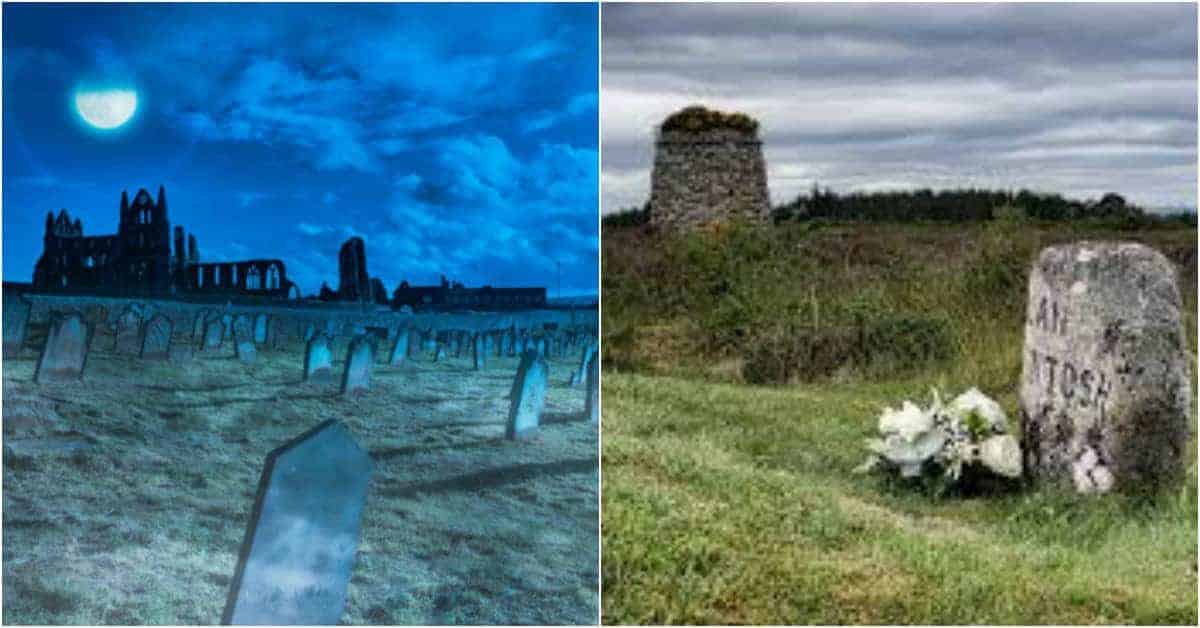History can leave its mark on places in many ways. Monuments and buildings stand as momentoes of past times and events, while below the surface, the discarded past lurks, waiting to reveal itself at the most unexpected moments. History can also mark a place in other ways- even when nothing material remains. It can live on in memory as stories and myths. Or, if you believe in them, it can manifest in the form of ghosts.
Psychic imprints, the spirits of lost souls or the workings of overactive imaginations, ghosts, and supernatural occurrences are as much a part of the history of Britain as its buildings and other physical remains. The stories of the ghosts can bring the past alive, giving a human dimension to the dry facts. They could even be real….
Here are just twelve uncanny places in Britain haunted by time, events and possibly the spirits of the dead.
Greyfriars Cemetery, Edinburgh

Edinburgh is a city haunted by time. It evolved along a volcanic ridge which rises to the high crag on which Edinburgh Castle sits. A natural defensive site, the hill was occupied from prehistory. As time flowed, the settlement grew, packing the narrow space with buildings. By the Middle Ages, the area around the road leading to the Castle, now known as The Royal Mile, was crammed with houses which reached upwards by several stories- and downwards too, as space ran out.
Tales of long-deceased residents, who still haunt Edinburgh’s ancient streets, abound. However, just below The Royal Mile is the site of one of the darkest acts in Edinburgh’s history. Greyfriar’s Cemetery is best known for its sweet tale of Greyfriars Bobby, the faithful Skye terrier who camped out at its dead master’s grave. However, in 1679, the cemetery housed the Covenanter’s prison, where four hundred people were kept caged in the open air and left to starve and die over that winter.
The Covenanters were a group of Scottish Presbyterians who, in 1638 signed a covenant disputing the belief that the king acted directly for god. The Covenanters believed only in the authority of Christ – and so they refused to accept the King as head of the Scottish church. The crown viewed this opposition as treason. After the restoration of the English monarchy, the crown began to crack down on the Covenanters. In 1679, matters came to a head at the Battle of Bothwell Brig when 1200 covenanters were captured and sent to Edinburgh for trial. A portion of them were kept at Greyfriars.
A stone’s throw away from the site of the Covenanter’s prison in Greyfriar’s Cemetery is the tomb of one of the Covenanter’s chief persecutors: Sir George Mackenzie, Lord Advocate of Scotland. In 1998, a homeless man sought shelter in Mackenzie’s tomb. As he tried to make himself comfortable for the night, he disturbed the floor of the mausoleum and fell through it – into an old plague pit, full of half-rotted remains.
The terrified man fled. Then, just a few days later, the mausoleum became the center of violent, unseen activity. Since 1998, Ghost hunters have collected over 500 reports and pictures of these attacks, which consisted of bites, scratches, burns – and bruises about the neck which are consistent with attempted strangulation. Mysterious fires have broken out in houses behind the tomb.
In 2000, a priest tried an exorcism in Greyfriars and had to give up because of the overwhelming misery he felt from the many spirits he encountered. Some believe that the incident disturbed the spirit of Judge Mackenzie- and maybe by default, the Covenanters he persecuted.

